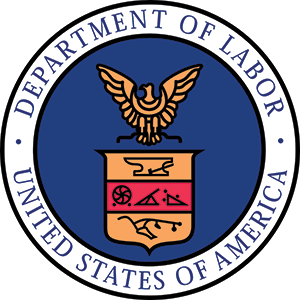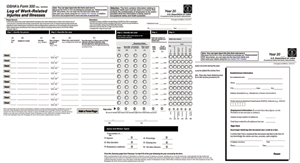California enacts COVID-19 employer notification law

|
A new California law that took effect Jan. 1 allows state regulators to shut down job sites that expose workers to an imminent hazard of COVID-19 infection while eliminating a previously required 15-day rebuttal period for contractors to respond to any alleged “serious violations” related to COVID-19, according to constructiondive.com.
California Assembly Bill 685 codifies much of the emergency temporary standard the California Division of Occupational Safety and Health implemented in November 2020. It also expands the notification requirements for employers, as well as Cal/OSHA’s policing powers for violations of infection-prevention requirements aimed at stopping the spread of COVID-19 in the workplace.
“It can be a challenge for contractors to comply with,” says Brendan Carter, vice president of labor relations at Associated General Contractors of America in California. “The fact that Cal/OSHA has a lower enforcement threshold means contractors really need to be diligent to ensure they’re in full compliance with this.”
In November 2020, California adopted an emergency temporary standard regarding COVID-19 that detailed employers’ requirements to have a written prevention plan that includes notification to employees of potential exposure; steps for removing workers who test positive for COVID-19 and exposed workers from the workplace while protecting pay and benefits; and notifying local health authorities of workplace outbreaks. California Assembly Bill 685 provides greater detail regarding those notification requirements and eliminates the 15-day warning period for contractors to respond.
Although contractors still can appeal Cal/OSHA citations, there no longer is a way to block a citation before the agency takes enforcement action, which can include an “Order Prohibiting Use,” or work stoppage, and fines of up to $25,000 per occurrence.
Department of Labor announces adjustments to civil penalties

|
The Department of Labor has announced adjustments to Occupational Safety and Health Administration civil penalty amounts for violations of workplace safety and health standards based on cost-of-living adjustments for 2021, according to osha.gov. The adjusted maximum penalty amounts took effect Jan. 15.
New penalties for willful and repeat violations are $136,532 per violation compared with $134,937 in 2020; serious, other-than-serious and posting requirements are $13,653 per violation compared with $13,494 in 2020; and failure to abate violations are $13,653 per day beyond the abatement date compared with $13,494 per day in 2020.
Additional information is available at osha.gov/penalties.
Department of Labor launches OSHA debt collection initiative

|
In late December 2020, the Department of Labor announced a final rule intended to improve its debt-collection policy, deterrence and enforcement, according to forconstructionpros.com.
The Occupational Safety and Health Administration initiative will involve implementing a series of three penalty payment letters to be sent seven, 30 and 60 days after an establishment fails to pay on time a penalty based on a final order; contacting establishments by phone 14 days after the payment comes due; and placing establishments that fail to pay penalties on a priority list for further inspection.
The previous rule provided “second and subsequent demands shall generally be made at 30-day intervals from the first.”
“By getting demand letters out with quicker action, the department will maximize collections of delinquent debts owed to the government,” says DOL CFO James Williams. “The department owes it to the public to ensure we are doing everything possible to hold violators accountable for their actions.”
OSHA issues stronger workplace guidance regarding COVID-19

|
On Jan. 29, the Occupational Safety and Health Administration issued more specific worker safety guidance to help employers implement a COVID-19 protection program and better identify risks that could lead to exposure and contraction. Previously, President Biden had directed OSHA to release clear guidance for employers to help keep workers safe from COVID-19 exposure.
“Protecting Workers: Guidance on Mitigating and Preventing the Spread of COVID-19 in the Workplace” provides updated guidance and recommendations and outlines existing safety and health standards. OSHA is providing the recommendations to assist employers in providing a safe and healthful workplace.
Implementing a COVID-19 protection program is the most effective way to reduce the spread of the virus. The guidance recommends several essential elements in a prevention program:
- Conduct a hazard assessment
- Identify control measures to limit the spread of the virus
- Adopt policies for employee absences that don’t punish workers as a way to encourage potentially infected workers to stay home
- Ensure COVID-19 policies and procedures are communicated to English and non-English speaking workers
- Implement protections from retaliation for workers who raise COVID-19-related concerns
The guidance details key measures for limiting the spread of COVID-19, including ensuring infected or potentially infected people are not in the workplace, implementing and following physical distancing protocols and using surgical masks or cloth face coverings. It also provides guidance regarding use of personal protective equipment, improving ventilation, good hygiene and routine cleaning.
The guidance is not a standard or regulation, and it creates no new legal obligations. It contains recommendations as well as descriptions of existing mandatory safety and health standards. The recommendations are advisory in nature, informational in content and are intended to assist employers in recognizing and abating hazards likely to cause death or serious physical harm as part of their obligation to provide a safe and healthful workplace.
“Protecting Workers: Guidance on Mitigating and Preventing the Spread of COVID-19 in the Workplace” is available at osha.gov/coronavirus/safework. OSHA will update the guidance to reflect developments in science, best practices and standards.
Employers are reminded to post OSHA Form 300A

|
The Occupational Safety and Health Administration reminds employers of their obligation to post a copy of OSHA Form 300A that summarizes job-related injuries and illnesses logged during 2020.
Each year, between Feb. 1 and April 30, the summary must be displayed in a conspicuous place or where notices to employees typically are posted. Businesses with 10 or fewer employees or those in certain low-hazard industries are exempt from OSHA record-keeping and posting requirements.



